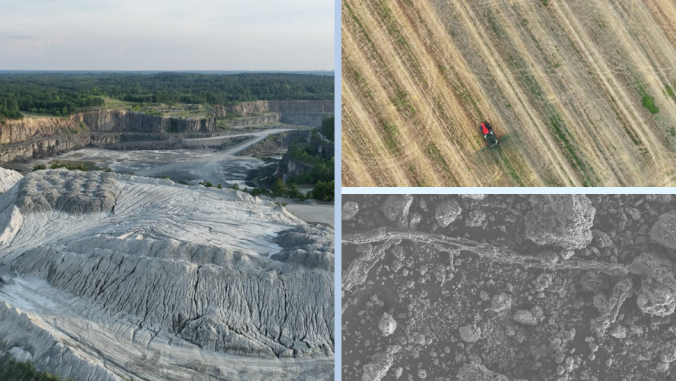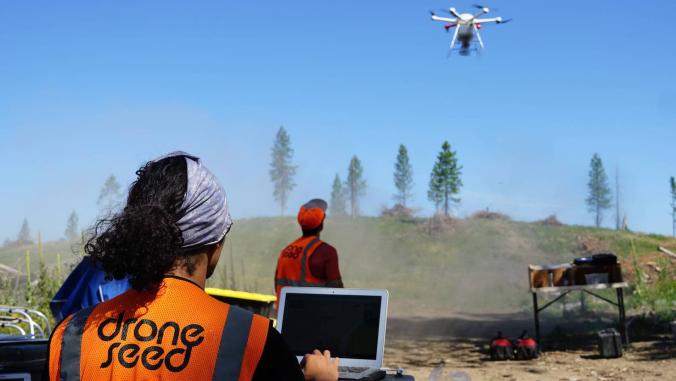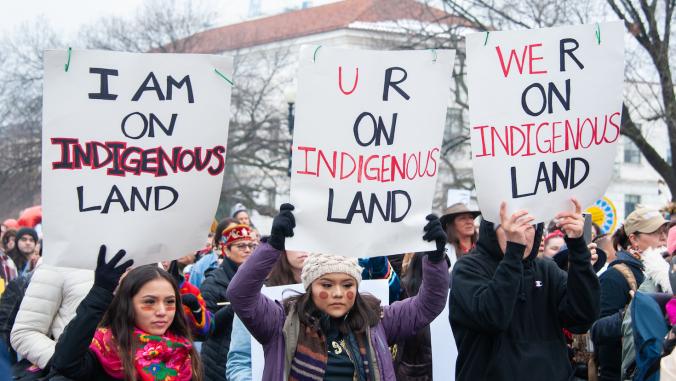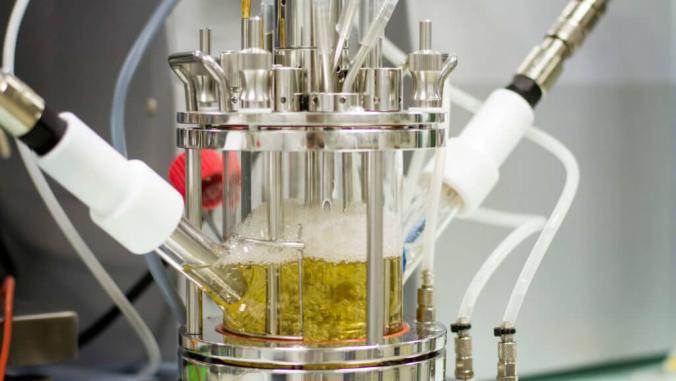For the first five years of our daughter’s life, my husband worked as a tech consultant, spending four days a week somewhere in the country that was not Brooklyn, New York, where we live.
Some people thrive on constant travel; my husband did not. The weekly flights, the late hours to make up for time lost in transit, the jetlag — it exhausted him. His back ached. He gained weight. And this may be difficult to imagine now, after weeks on end trapped inside with our significant others and children, but he actually wanted to be with his wife and little daughter. His absence was hard on us too.
These weekly commutes always seemed like such a waste. The projects my husband worked on lasted an average of six months, and for all but the first month or so of that — and particularly important meetings better held face-to-face — his physical presence in the client’s offices was unnecessary. Most weeks, they spent $2,500-$3,500 for him to sit at a desk, coding, when he would have been more productive at our kitchen table.
Whether it’s a daily slog in rush hour traffic or regular trips to that hellscape known as the airport, Americans and our employers have come to pay a huge price for all of our mandated movement. Employees pay with their time, quality of life and mental and physical health; companies pay with billions of dollars and lost productivity.
Reducing the number of flights frequent travelers take is key from a climate perspective.
For the environmental damage, everyone pays. At 28 percent, transportation is the single largest source of greenhouse gas emissions in the United States, according to the Environmental Protection Agency. All those cars, trucks and planes are a leading cause of air pollution, which in a sooty feedback loop further damages our health.
Since worldwide lockdowns to fight the coronavirus pandemic began, GHG emissions have plummeted and many city residents are breathing the cleanest air they have in decades. Experts warn this is only temporary unless governments accelerate the clean energy transition as part of their economic recovery efforts.
But while government action will play the biggest role by far in determining whether we create a "new normal" that prioritizes public health, quality of life and environmental healing, the choices companies are making about their long-term future could have a significant impact, even if their initial motivation for making those choices is primarily economic.

After the lockdown abruptly upended American working life, relegating the vast majority of the country’s white-collar workforce to any nook or cranny their homes would provide, companies learned to work in ways many didn’t believe possible. Now, faced with the worst economy since the Great Depression and looking for ways to cut costs, corporate executives are seeing remote work and business travel in a new light.
Already, a growing number of companies say they plan to make some portion of the jobs that have been done remotely due to COVID-19 permanent work-from-home positions. Surveys of both corporate executives and full-time American employees have found that many employers and workers are on board with a permanent increase in remote work. On May 12, Twitter told employees they can continue working from home "forever" if they want to.
Global Workplace Analytics predicts that, when all is said and done, 25-30 percent of the U.S. workforce will be working from home multiple days a week by the end of 2021. Before the pandemic, only 3.6 percent worked remotely half the time or more, largely because many managers didn’t trust their employees to get the job done at home.
"Management have been humbled. We’ve all gone through this humbling shared experience," Bhushan Sethi, who co-heads PwC’s people and organization unit, told GreenBiz. "It’s not going to be one size fits all. But those who want the flexibility are no longer going to have to convince their supervisor that they’re not sitting at home on the couch watching daytime TV."
We’ll have to wait to see the final tally and the true environmental impact, however, given that the roughly 250 million cars, SUVs and pickup trucks on U.S. roads account for 60 percent of transportation emissions, and 76 percent of Americans drive to work alone each day, if the Global Workplace Analytics prediction comes close, the impact on emissions and pollution generated from transportation could be significant.
Not up in the air
Surveys of C-suite executives and company announcements on permanent reductions in business travel have been more elusive, but behind the scenes, things are happening on that front as well.
"Many of our clients are saying, 'The work that we relied on to be done in person, we’re going to challenge whether we actually still need to do that,'" Sethi said. "I’m not saying they’re going to radically change everything, but we anticipate a certain number of our clients are going to scrutinize travel budgets. The need to be somewhere in person will be scrutinized."
This examination makes sense, considering that before the world shut down, global business travel expenditures were expected to reach $1.7 trillion by 2022, with China and the U.S. topping the charts, according to the Global Business Travel Association.
To dig a little deeper into the source of that cash, there’s the Corporate Travel 100, an annual ranking from Business Travel News of the companies that shell out the most on air travel.
Because of my family’s personal history, I found this list pretty interesting, if not surprising. In 2018, the top 100 spent a total of $11.45 billion on U.S.-based bookings of domestic and international flights. The top seven spenders alone accounted for nearly one-fifth of that ($2.5 billion), and except for Apple at No. 4, all seven were consulting companies, including the one my husband used to work for. Deloitte, IBM and PwC topped the list.
The goal is curbing out-of-control growth, slashing emissions as much as possible and offsetting what absolutely can’t be reduced.
Of course, consulting firms pass any client-related travel costs onto the client, so there’s no telling who paid the final bill. The point is: If Sethi’s observations apply to the broader consultant world, we may see some long-term reductions at the top of that list.
A friend of mine, who has worked in consulting for more than 20 years, thinks so. He told me that clients traditionally have been willing to pay up because "they want to see you at your desk. They want to be able to walk up and see what you’re doing."
However, that was already starting to change pre-COVID, he said. For more than a year, he’s worked from home for a telecommunications client, a sector that’s been ahead of curve in remote work. "I think other companies will see the light pretty quickly when they stop seeing the travel bills," he said. "They’ve been thinking about it for a long time. This has just forced them to embrace it much faster than they would have."

A whole new flight plan?
Reducing the number of flights frequent travelers take is key from a climate perspective.
Before the pandemic, the airline industry accounted for only 2.5 percent of global carbon emissions, but that share was expected to grow significantly. One study found that by 2050, aviation could take up a quarter of the world’s "carbon budget," the amount of emissions permitted to keep global temperature rise around 1.5 degrees Celsius above preindustrial levels.
The airlines are in dire straits right now, and most experts predict it will take several years for the industry to recover. When demand does begin to increase, frequent fliers more than anyone will determine whether the growth trajectory the industry was on will continue.
Why? Consider this: In the United States, the 12 percent of Americans who fly six or more times per year were responsible for about two-thirds of all U.S. flights in 2017, according to an IPSOS survey. At the other end of the spectrum, 13 percent of Americans have never been on a plane.
Like it or not, air travel is one of the most visible examples of the unfairness of the climate crisis. Judging by the way the media, social and otherwise, erupts in gleeful condemnation when celebrities and high-profile business leaders advocate climate action while flying around in private jets, it’s an inequity not lost on the public.
Extending that to business travel, U.S. professionals take an average of seven business trips by air each year, which means a whole lot of employees fly maybe two or three times annually, likely to conferences and other events. They probably consider these opportunities a nice perk. For those who fly more than average, especially management and corporate executives, reducing travel offers an opportunity for credibility with customers and employees, otherwise known as walking the walk.
Dallas-based Jacobs, a civil engineering and technical consulting firm, already had committed to a 20 percent reduction in business travel when COVID-19 hit, a target that includes a pledge from its executives and managers to reduce in-person meetings that require travel.
"The pledge by Jacobs senior leaders is a vital part of an organizational-wide behavior shift," Zoe Haseman, vice president of global sustainability, told GreenBiz in an email. "Through leading by example, they can demonstrate to their teams that the company is serious about this commitment, and that this shift towards reducing our emissions starts with our people changing how they work, taking action and being accountable."
We’re experiencing a vision of things we can potentially have in the future should we so choose. I think the power of that is hard to overstate.
Although far from easy, reducing corporate travel and employee commuting is actually one of the easier ways to put a dent in Scope 3 emissions, the supply chain and other offsite emissions that, for most sectors, represent the largest share of a company’s carbon footprint and the most difficult to control.
Business travel makes up 60 percent of Jacob’s total quantified emissions, Haseman said. While the company originally targeted a 20 percent reduction from 2019 levels by 2022, it is "now working to ensure that when travel restrictions are lifted, emissions don’t rebound to pre-COVID-19 levels."
Any significant reduction from a 2019 baseline seems like a good start. Remember, the U.N.’s Carbon Offsetting and Reduction Scheme for International Aviation (CORSIA) calls for airlines to buy offsets to account for any growth in CO2 emissions above 2019-2020 levels. (Although the airline industry is lobbying to have that baseline adjusted due to this year’s steep drop in travel.) In other words, business travel and the airlines don’t need to disappear. The goal is curbing out-of-control growth, slashing emissions as much as possible and offsetting what absolutely can’t be reduced.

Nothing about building a new normal has to be an all-or-nothing proposition. I realize many people are longing to get back to the office or back on the road. We’re all in need of a little human interaction — a certain amount of face-to-face interaction is necessary (and enjoyable!), especially in fields where establishing trust and building relationships are part of the job. There will always be in-person meetings, site visits and networking events that will mean getting on a plane.
But for jobs that require establishing trust and a rapport, once that’s been established, can more conversations than before happen by phone or video chat? Can trips be planned to include multiple meetings or visits? Can conferences and other events that are more about content than networking go virtual permanently? What is truly essential and what is, frankly, excessive?
This "forced experiment" of what happens when we don’t let anyone travel anywhere likely will lead many companies to ask these sorts of questions and reassess their strategies and plans when the economy begins to recover, John Pflueger, Dell’s principal environmental strategist, told GreenBiz.
"I have a hard time believing business travel will return to the same level," he said. "We’re experiencing a vision of things we can potentially have in the future should we so choose. I think the power of that is hard to overstate. People get a taste of something, and we don’t want to go back to normal."
No one knows what the new normal for America’s corporate travel culture will look like in the future. As Bill Gates put it recently, "There will still be business trips, but, you know, less."
Speaking of setting examples. Gates ranked No. 1 on a recent analysis of celebrity emissions, which found he emitted roughly 1600 tonnes of CO2 from flying in 2017, while the global per person average is a mere 100 kilos.
One can argue The Bill and Melinda Gates Foundation co-founder does more good than harm as he jet-sets around the world. One can also hope that he is among those who’ve learned something from the current global health crisis that will help address the other major crisis of our time, and that he will be one of those analyzing the essential versus the excessive and leading by example.






